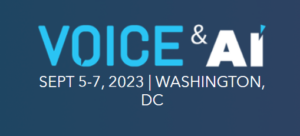
How Generative AI Is Transforming the Call Center Market

(LuckyStep/Shutterstock)
Large language models (LLMs) and generative AI are nothing new to the contact center business, which generates $2 trillion globally and employs half a million people in the US alone. But following the explosive launch of ChatGPT, the contact center business finds itself in the midst of a massive technological transformation that will fundamentally change how work is done.
“GPT is something that most conversational AI companies have been tapping into for several years,” says Pete Erickson, the founder of VOICE & AI, a conference for contact center operators and technology providers scheduled to take place in Washington, D.C. next month. “We knew about generative AI before it was a term that was really used as something that’s now a whole category of technology. It was always a part of our industry.”
In addition to tapping into APIs from OpenAI, large contact center operators and their technology providers were adopting technologies like AWS Alexa and Google Assistant to build conversational AI systems to augment or replace human call center workers. At its peak in 2019, Erickson’s conference, which was previously called just VOICE, attracted 5,000 people.
But the initial momentum behind that previous era of generative technology was stalling out by then as it entered into the Trough of Disillusionment (with props to Gartner and its Hype Cycle), Erickson said. “You weren’t getting developers flooding into that market and trying to build applications,” he told Datanami.
Then COVID hit, which cleared out the call centers and forced companies to get more creative in how they dealt with customer calls. They leaned on conversational AI to help with the flow of calls, emails, and text inquiries coming in from customers and enhancing the customer experience (CX).
“What happened in the wake of that Hype Cycle passing, or the Trough of Disillusionment, if you will, is the realization was that enterprises were recognizing that conversational AI and CX automation were going to lead to big ROIs,” Erickson said. “If you can alleviate just 5% of your contact center traffic, that’s a massive ROI.”
When OpenAI launched ChatGPT in late November 2022, it opened the floodgates on conversational and generative AI development. A massive amount of momentum surged into the technology, and soon there were dozens of foundation models to build on from familiar faces like Google and OpenAI but also Facebook, Hugging Face, and Anthropic, among others.
Suddenly, contact center operators and their technological partners had the means to actually achieve their dreams of reinventing their business models around conversational AI and delivering the big returns that were out of reach with the previous generation of AI tech. Large companies like Walmart, Walgreens, Capital One, and Cathay Pacific will at the VOICE & AI conference to share how they’re navigating this new era of generative AI and learning from others.
“This is a very unique year,” Erickson said. “This year is the year that’s special because everybody’s trying to get their hands around what’s happening now…Everybody at this point this year is like, What’s possible now? How should I be evaluating this?”
So much has changed technologically in such a short period of time that it’s causing a ripple effect in the larger enterprises that are trying to figure out to adjust their roadmaps to account for the new tech.
“What’s happened is, if you’re an enterprise and you were starting to scope out a solution in 2022, now suddenly you have to sort of rethink that approach,” Erickson said. “You don’t want to build a solution on older technologies or not take into account maybe some technology that can really help you get where you’re trying to get to.”

You can learn more about the VOICE & AI conference here
VOICE & AI attendees will run the gamut from developers and conversation designers to product leaders and marketers, Erickson said. They are all trying to figure out what the best approach for utilizing the new generative AI technologies to upgrade their aging tech stacks.
For example, should an enterprise build and train its own LLM or is it enough to just tap into the APIs of a provider that’s already built and trained one? These are the questions that most enterprises are asking right now, said Erickson, who has a hunch that there will be a small army of cloud companies providing LLM customization services.
But beyond the foundation models, there is more foundational work to be done with the call center stacks, he said.
“The big prize for most of the conversational cloud vendors that are out there is the contact centers,” he said. “It’s a $2-trillion market globally and it needs to be modernized. It’s all based on old IVR [interactive voice response] technologies and old telephony stacks. All that needs to be upgraded and the new wave is plugging in AI systems into contact centers and alleviating the pressure on the call center. That’s a massive market and it’s a big part of our conference.”
Enterprises are still figuring out how generative AI can fit into their businesses. Depending on if you’re a retailer or a bank or an airline, the applications will be different, and so the VOICE & AI conference will give attendees a place to share ideas.
“What are the benefits? What are the risks? I think people are asking themselves a lot of questions. How is this actually going to impact my organization? How can I make use of it?” Erickson said. “It’s still super challenging for a major enterprise to actually incorporate an LLM and generative AI and that’s what they’re all learning. It’s fast and slow. The technology is very fast, but really making use of it’s going to take time.”
Related Items:
In Search of Hyper-Personalized Customer Experiences
Will AI Own Customer Service? Why Handing Over the Reins Isn’t Always Easy
































